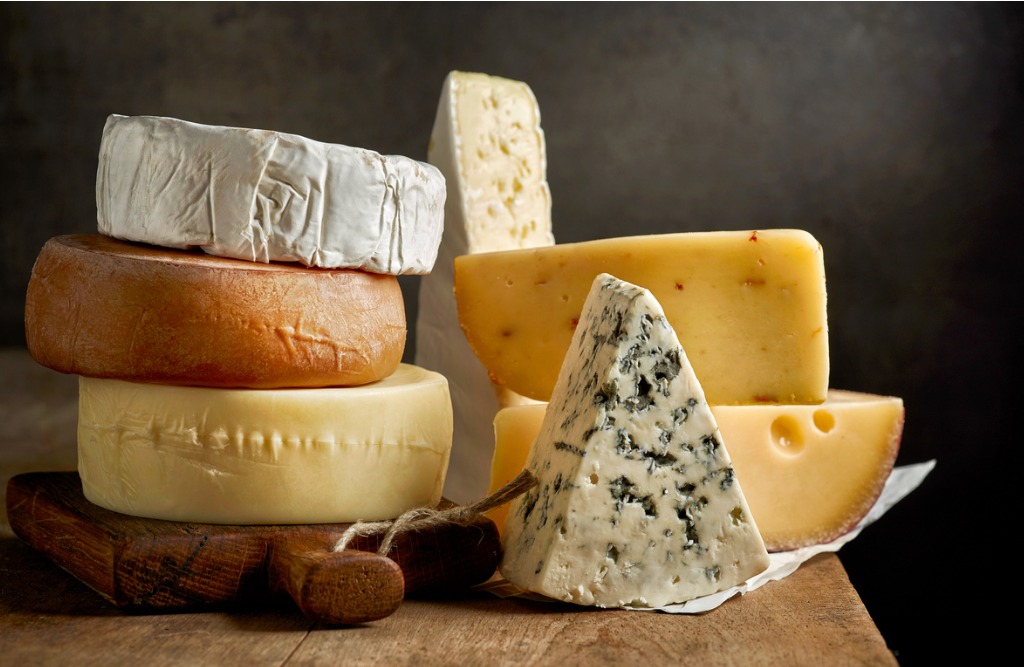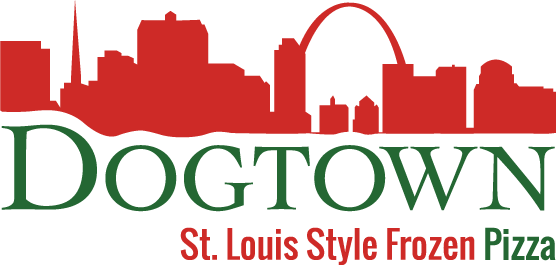A Brief History of Cheese

As you can probably guess, at Dogtown Pizza, cheese is essential to our operations. To create the most delicious St. Louis-style pizza you can buy, we use a creamy, tangy three-cheese combination to create a flavor that is uniquely our own. It’s clear that we owe a lot to this delicacy, which is why we’re going to take a little bit of time to go over the history of cheese, including its origins, increase in popularity, and its impact on the culinary industry.
The Origins of Cheese-Making
The origins of cheese-making can be traced as far back as 8000 B.C.E., before pottery, writing, and even metal tools were first created. The earliest cheese-makers were neolithic (“New Stone Age”) farmers who lived in the Fertile Crescent, a boomerang-shaped region that can be found in the Middle East. Today, the Fertile Crescent spans modern-day Iraq, Syria, Lebanon, Israel, Palestine, Jordan, and Egypt.
Long ago, the Fertile Crescent was where you could find the ancient civilization of Mesopotamia, and it was also the birthplace of a number of innovations, including the wheel, agriculture, irrigation, and, of course, cheese-making.
Speaking of agricultural developments, this led to the domestication of animals like sheep and goats, which ancient farmers harvested for milk. However, if it was left sitting in warm conditions for an extended period of time, that raw milk, naturally, would begin to sour. Because of the lactic acid that can be found in milk, the warmth caused its proteins to coagulate, which then binded into soft clumps.
When the farmers discovered this odd transformation, they drained the leftover liquid from the milk, leaving only the clumps behind. Together, these two substances came to be known as curd and whey. The farmers, upon trying the yellow curds, discovered that these fresh blobs could be eaten by themselves as a tasty, spreadable delicacy.
This curdled milk led to the creation of dairy farms and is what would form the basic building blocks of cheese-making. Eventually, these natural cheese blobs would go on to be aged, pressed, and ripened to create the numerous types of cheeses and cheese products that we are familiar with today.
So yes, it seems that we only have cheese today because somebody accidentally left their milk sitting in the hot sun. Thank you, random, ancient dairy farmer!
Cheese Increased Ancient People’s Chances of Survival!
For the ancient Mesopotamians, cheese wasn’t just a delicious treat. It also gave them an unprecedented survival advantage! You see, milk is rich with essential proteins, fats, and minerals, but it also contains a large amount of the sugar known as lactose. Lactose was difficult for ancient people’s stomachs to digest (and it still is to this day!).
Cheese, on the other hand, can provide people with all of these aforementioned benefits, but it contains far less lactose. Because cheese could be easily stockpiled and preserved, this meant that it could be eaten throughout long famines and harsh winters, enormously decreasing the risk of starvation.
Cheese Became a Global Phenomenon
By the time the end of the Bronze Age had come around, cheese was one of the world’s hottest commodities, and it became a standard of maritime trade throughout the eastern Mediterranean. It was a staple in both the diets and religious practices of the densely populated Mesopotamian city-states. In fact, some of the earliest forms of writing that have been discovered contain records of a wide variety of European cheese quotas.
It’s no secret that ancient European civilizations were as cheese-obsessed as we are!
Different Cultures Developed Other Forms of Cheese-Making That Are Still Popular Today!
This time period also produced the earliest references to the animal byproduct known as rennet, which is produced in the stomachs of certain mammals. Rennet is special in that it can be used to both accelerate and control coagulation of proteins. Needless to say, rennet soon became an advanced cheese-making tool.

By utilizing rennet, cheese-makers around the world were able to begin developing harder, more sophisticated types of cheeses. While some conservative cultures rejected the idea of cheese, most people embraced it, and cheese quickly became a worldwide phenomenon, with many cultures introducing their own unique methods of cheese preparation.
Nomadic Mongolians utilized ram’s milk to create sun-dried pucks of cheese known as byaslag. The ancient Egyptians used goat milk cheese to create the earliest form of cottage cheese by straining out the whey using reed mats. By coagulating milk combined with a variety of food acids, including lemon juice and yogurt, South Asians created paneer. Meanwhile, the Greeks were hard at work creating feta cheese.
Under the Roman empire, dry cheese became an essential ration for the hundreds of thousands of soldiers that guarded the massive borders of the ancient eastern and western Roman empires. In the middle ages, after the collapse of the western Roman empire, monks living in benedictine monasteries experimented with several methods of cheese-making. These eventually led to popular varieties of modern cheese including parmesan, roquefort, and muenster.
The Industrial Revolution and Modern Day Cheese
Cheese remained extremely popular throughout the ages, and, with the onset of the industrial revolution in the 19th century, cheese-making transitioned from monasteries into machinery-driven cheese factories. Today, the United States alone produces around thirteen billion pounds of cheese per year, and, when the entire world is taken into consideration, this number rises to almost fifty billion pounds! That’s a lot of cheese!
The team here at Dogtown Pizza truly owes a lot to the ancient cheese makers of yore. We don’t even want to think about where we would be if the cheese we use for our pizza had not been invented. Luckily for us, that wasn’t the case, and, luckily for you too, because you were not deprived of the best St. Louis-style pizza ever created!
Whether it’s a simple, classic Cheese or Pepperoni Pizza, or one of our more unique varieties like Four-Meat, Hot Wing, or Tomato Basil Garlic, we can guarantee that you’ll love it. Go ahead and pick up some Dogtown Pizza at your local St. Louis grocery store!





This Post Has 0 Comments